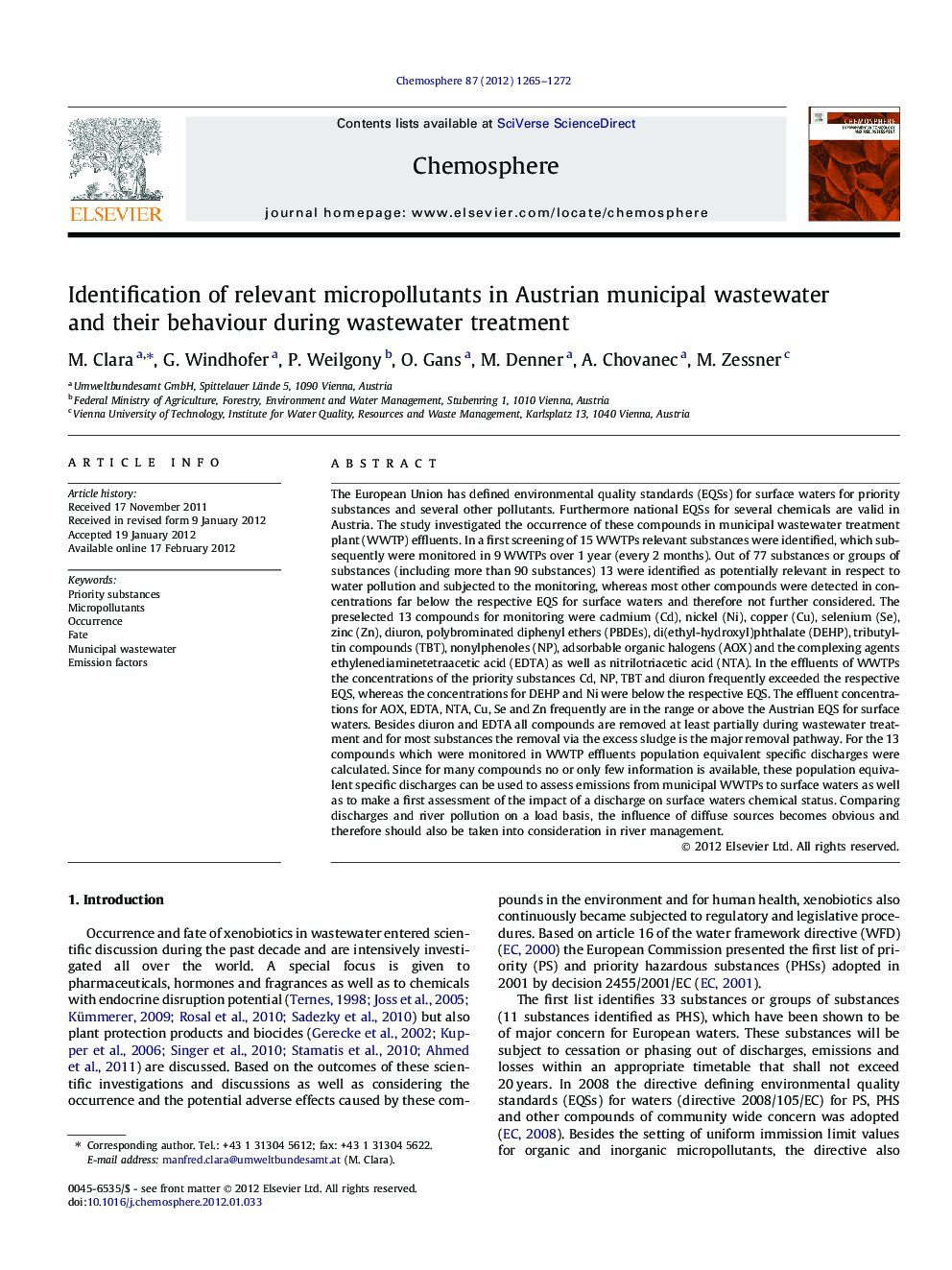| کد مقاله | کد نشریه | سال انتشار | مقاله انگلیسی | نسخه تمام متن |
|---|---|---|---|---|
| 4409722 | 1307502 | 2012 | 8 صفحه PDF | دانلود رایگان |

The European Union has defined environmental quality standards (EQSs) for surface waters for priority substances and several other pollutants. Furthermore national EQSs for several chemicals are valid in Austria. The study investigated the occurrence of these compounds in municipal wastewater treatment plant (WWTP) effluents. In a first screening of 15 WWTPs relevant substances were identified, which subsequently were monitored in 9 WWTPs over 1 year (every 2 months). Out of 77 substances or groups of substances (including more than 90 substances) 13 were identified as potentially relevant in respect to water pollution and subjected to the monitoring, whereas most other compounds were detected in concentrations far below the respective EQS for surface waters and therefore not further considered. The preselected 13 compounds for monitoring were cadmium (Cd), nickel (Ni), copper (Cu), selenium (Se), zinc (Zn), diuron, polybrominated diphenyl ethers (PBDEs), di(ethyl-hydroxyl)phthalate (DEHP), tributyltin compounds (TBT), nonylphenoles (NP), adsorbable organic halogens (AOX) and the complexing agents ethylenediaminetetraacetic acid (EDTA) as well as nitrilotriacetic acid (NTA). In the effluents of WWTPs the concentrations of the priority substances Cd, NP, TBT and diuron frequently exceeded the respective EQS, whereas the concentrations for DEHP and Ni were below the respective EQS. The effluent concentrations for AOX, EDTA, NTA, Cu, Se and Zn frequently are in the range or above the Austrian EQS for surface waters. Besides diuron and EDTA all compounds are removed at least partially during wastewater treatment and for most substances the removal via the excess sludge is the major removal pathway. For the 13 compounds which were monitored in WWTP effluents population equivalent specific discharges were calculated. Since for many compounds no or only few information is available, these population equivalent specific discharges can be used to assess emissions from municipal WWTPs to surface waters as well as to make a first assessment of the impact of a discharge on surface waters chemical status. Comparing discharges and river pollution on a load basis, the influence of diffuse sources becomes obvious and therefore should also be taken into consideration in river management.
► Numerous compounds are present in treated wastewater.
► Discharges of treated wastewater are relevant only for a few regulated compounds.
► Also other emission pathways as combined sewer overflows are relevant impact factors for surface water quality.
► Before planning of measures also those emission pathways should be considered in river basin management.
Journal: Chemosphere - Volume 87, Issue 11, June 2012, Pages 1265–1272